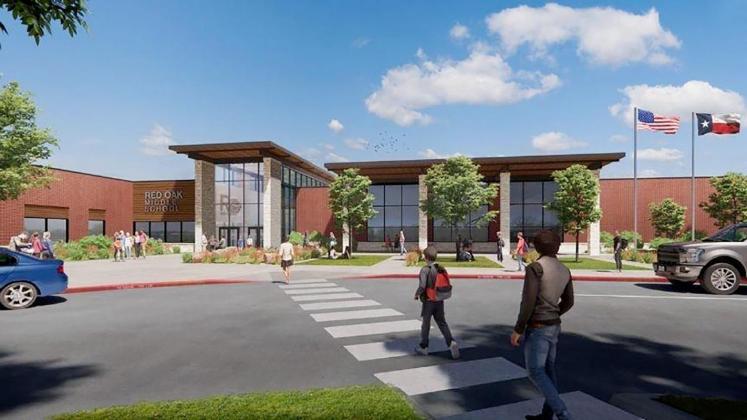ROISD Bond Election, Pro’s and Con’s
RED OAK – Election signs are everywhere in the city during election season: “vote no” or “vote yes” for the bond election.
A little about what a bond election is and why voters get involved: a county or municipality is not able to issue bonds that are to be paid from ad valorem taxes unless the issuance is approved by the voters of that county or municipality in the election.
In the case of Red Oak ISD, there will be a bond election on May 6 for one item, which has been whittled down immensely since the last few elections.
This item – Proposition A – is for the constructing, acquiring, and equipping a new second Middle School in Red Oak, for a cost of $97.5 million.
As Red Oak ISD Superintendent Brenda Sanford said, “The growth isn’t going away. While we have added classroom space, we are still well over capacity at the current middle school for support spaces such as the cafeterias, hallways, restrooms, and extracurricular areas.
“And with approximately 1,550 students, there are fewer engagement opportunities available to our students, and it’s hard to establish relationships and have a family atmosphere on a campus that large.”
As in all elections, resident’s opinions vary.
Here is a pro and con look at voting yes or no in the upcoming bond election in May.
The last approved bond election in Red Oak ISD was in 2007.
The “Pro” for the bond election comes from Michael Myers from Ovilla.
Students from that city attend Red Oak ISD.
Myers said he believes there is a true cost of voting no on school bonds.
“Our school district is overflowing with kids, and more are coming. We can see the growth in Red Oak with new houses and apartments going up everywhere.
“This new growth has severely affected our schools with all but one approaching or exceeding the building’s capacity,” Myers said.
“It takes about two years to build a school. Just imagine how many middle school students will need to be housed in the future before a new school is built, if in fact it is built.”
Myers said he believes the May 6 bond next month will be an “inflection point for the school district” and he goes on to say there is already talk of busing students into rented facilities outside the district boundaries mentioning portables to be used that will cost over $150.000.
“What about the effect of overcrowding,” he added noting this causes a drop in academic performance. Last year Myers mentioned the Texas Academic Performance Board rated the Red Oak Middle School with a C rating compared to other middle schools in the state.
“A bond does not cause a tax increase,” he said. “It is paid for by property taxes gained from the building of new homes in Red Oak. In fact, the school board has reduced property taxes the past four years.”
The “Con” for the upcoming Red Oak Bond Election comes from Bill Foster, a Red Oak resident.
Foster said his reasoning is because there are alternatives to the bond election.
He does not believe this is a good time for such a debt and he said he did not see overcrowding in the current middle school when he toured there.
“The main reason I believe the $97.5 million school bond is a bad idea is the refusal to examine any alternatives.
“The school board has a member that has a lifetime of experience in the real estate industry on the board and they refuse to listen to anything she brings up. To the best of my knowledge, none of the rest of the board have any real estate experience at all. But they refuse to consider her ideas.
“She looks at the inflation we have in this country currently as do I and knows that the timing is wrong for a bond of this magnitude. A $97 million bond with interest will make the taxpayers responsible for $170 million. Piled on top of the existing $110 million Red Oak owes will make a total indebtedness of $280 million.
“That is not sustainable in this fiscal environment. Inflation is not going away anytime soon,” Foster said.
“I look at her solution which is the architects plan to ROISD in 2019. They proposed to rework and repurpose Eastridge and Wooden Elementary schools adding cafeteria/kitchen/storm shelters. Repurpose the existing cafeteria into 8 classrooms in each building.
“It gives you room for relocating 320 middle school students from the “overcrowded” middle school.
“The estimated time to build this should take far less than the 2-3 years it will take to build a new middle school. The cost will be approximately $30 million. That is far less and more affordable than $97 million,”
In Foster’s mind he concluded, “Let’s hold off a couple of years on a new middle school until we have a business infrastructure paying taxes to alleviate the burden on the individual homeowner and renter.”

